The 20 best project management software packages to try out in 2025!
What would successful project management be without the best project management software for your company?
But with so much on offer on the market, it can be hard to make the right choice. To help you make up your mind, we've compiled a list of the 20 most effective tools.
Find yours by discovering our comparison of the best project management software 2025.
The best project management software? You'll find them here
1 of 18
monday.com
monday.com is a software package designed to facilitate teamwork and project management for all types of business, from project managers in large companies to managers and directors in smaller organisations.
It works on the principle of tables, made up of intuitive, customisable columns (deadlines, people, notes, etc.), whose elements can be manipulated simply by dragging and dropping. There are also a number of views and functions for tracking activities precisely (Gantt, Kanban, etc.).
But this tool goes further than just project management. In fact, thanks to its great flexibility and the various templates available, it supports the management of many other activities (CRM, marketing, content production, etc.).
💰Rates
monday.com is available from €9/month/user.
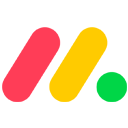
monday.com
Asana
Asana is work management software that helps employees coordinate and manage their tasks and projects. And it does this with a host of features, such as Calendar View, File View, Progress View and Comment Permission.
Using the platform saves companies a considerable amount of time. Everyone is kept informed of the team's plan, process and deadlines, which tends to significantly boost productivity and communication over the long term.
Finally, a special mention for the dozens of integrations available (Zapier, Jira, etc.) and the smooth, automatic synchronisation with your Google calendar.
💰Prices
Asana is available from $10.99/month/user. There is also a free package.
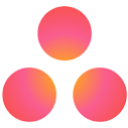
Asana
Basecamp
Basecamp, a project management application also available on mobile, is used by millions of professionals around the world. They appreciate its rich functionality and ease of use.
Basecamp has six main components: the Campfire discussion forum, the Message Board official announcements forum, the To-dos task manager, the Schedule diary, the Check-ins ideation tool and, finally, a space dedicated to document sharing.
Its user-friendly interface makes it easy to manage several projects. This gives managers a global view of operations (from product launches to creative development for a marketing department, for example).
💰Rates
Basecamp is available from $15/month/user.
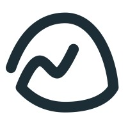
Basecamp
Bubble Plan
The 100% French Bubble Plan project management solution will appeal to SMEs and SMIs looking for efficiency and simplicity. Thanks to a visual and intuitive interface, based on a drag and drop system, you can model and track all your projects in just a few clicks.
In terms of functionalities, Bubble Plan incorporates all the tools you need to perform and manage your resources more effectively: interactive planning, double-entry Kanban, dashboards, task and milestone management, collaboration and information sharing, etc. In short, the software addresses your main needs, from simple 'to do' management to portfolio management.
Last but not least, Bubble Plan stands out for its scalability: you can benefit from several annual updates, as well as bespoke developments if required.
💰Prices
Bubble Plan is available from €12/month/user. There is also a free version.
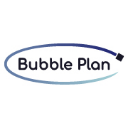
Bubble Plan
ClickUp
ClickUp is a software package that brings together all the functions you need to manage your projects properly: creation of tasks, documents and spreadsheets, knowledge base, chat, planning via calendars, timelines and Gantt charts, etc.
One of the key features of the platform is its high degree of customisation. For example, you can select the most relevant view according to your needs (list view, table view, calendar view, etc.). You can also adapt your digital workspace without limit, choosing the different features you want to use, colours and statuses to classify your tasks.
💰Prices
ClickUp is available from $7/month/user. There is also a free package.

ClickUp
FoxPlan
FoxPlan is a complete project portfolio management software package. It helps companies in all sectors to manage all their projects efficiently, thanks to its many functions: dashboard, planning, roadmap, budget monitoring, workload plan, etc.
Organisations appreciate FoxPlan for its flexibility in terms of the project management methodologies it supports: Agile (Scrum and Kanban), V-cycle, hybrid, etc. And to better adapt to the needs of development teams, it interfaces with Jira.
Finally, a special mention for its high-performance resource management, with a consolidated view of all your collaborators' activities.
💰Prices
FoxPlan is available from €8/month/user. There is also a free package.
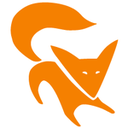
FoxPlan
Gouti
The comprehensive Gouti solution combines project management, project portfolio management, collaborative working, time and availability tracking and financial management. It is therefore a true " project management ERP ", perfect for companies that want to industrialise and standardise their processes, while enjoying maximum visibility over their portfolios and capacities.
Another of the software's strengths is that it can be adapted to your needs and how they evolve. Firstly, you benefit from a system of modules that you can choose whether or not to activate. What's more, Gouti is particularly flexible in terms of working methodologies (Agile, V-cycle, Kanban, etc.).
Finally, you'll benefit from premium support, with a dedicated account manager on hand to help you.
💰Rates
Gouti is available from €12.50/month/user. There is also a free version.
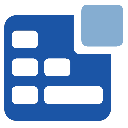
Gouti
JOUROFF Project monitoring
JOUROFF Project Tracking is a project tracking solution based around the following three axes: time spent, workload and budget (or project profitability).
To do this, the software uses a flexible data model that can be adapted to all business configurations and requirements: portfolios, projects and sub-projects, lists of activities, tasks and services, etc. And thanks to the analytical axes, you can monitor your projects according to their common characteristics.
At the same time, JOUROFF Project Tracking provides effective support for capacity planning, budget management, time recording and analytical tracking of time spent. All using a highly intuitive interface.
💰Rates
JOUROFF Project Tracking rates are available on request.
Freedcamp
Freedcamp is the ideal online platform for all professionals who want to work on a large number of projects simultaneously. Its powerful task management module gives you a centralised 360° view of all your tasks and projects. Its Gantt chart mode is just as accomplished (tracking the relationship between tasks, displaying their rate of progress, etc.).
With a free version, as well as a range of very affordable price plans, Freedcamp is suitable for businesses of all sizes.
Finally, the software includes a wide variety of add-ons, and has its own iOS and Android apps.
💰Rates
Freedcamp is available from $1.49/month/user. There is also a free package.

Freedcamp
Furious
Furious is positioned as a complete project management solution for agencies, consultancies and service companies in general that sell man-hours/fees/assignments. This software takes care of project management from A to Z for these professionals, from pre-sales to invoicing.
More specifically, Furious provides effective support for measuring your profitability, managing your costs, scheduling tasks according to working hours and monitoring the progress of projects.
And thanks to its many automated functions and intuitive interface, Furious significantly boosts employee productivity.
💰Prices
Furious is available from €25/month/user if you wish to subscribe to a single module (CRM quotations and sales follow-up, project and team management, invoicing and cash flow).
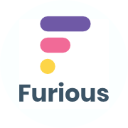
Furious
Gladys
Made 100% in France, Gladys is an excellent project management solution for SMEs, ETIs and large groups.
While it includes all the classic functionalities expected in this category of software, particularly in terms of task management (deadlines, allocation to collaborators, etc.), it goes further by supporting the organisation of ideas and the management of strategic plans.
At the same time, Gladys stands out for its highly collaborative approach: EDM for simple file sharing, instant messaging, diary organisation, etc.
💰Rates
Gladys is available from €9/month/user. There is also a free package.

Gladys
Jira
A project management solution published by Atlassian, Jira is widely used by technical teams responsible for software development.
Its use is therefore ideally suited to agile methods, thanks to a number of perfectly adapted functions: creation of backlogs, intelligent prioritisation of tickets, visual scrum tables, agile reporting, etc. We also appreciate its roadmaps, which provide an overview of projects and the progress of teams' work.
And if required, Jira can evolve (adding ticket types, fields, workflows, etc.), to align with your organisation and best meet your customers' needs.
💰Rates
Jira is available from $7.75/month/user. There is also a free package.
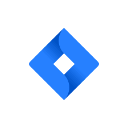
Jira
Microsoft Project Online
Microsoft Project Online is the project management solution published by Microsoft. It lets you work as a team on joint projects, whether large or small.
With this tool, you can create tasks in just a few minutes. Then you schedule them over time, assign them to the right people and monitor their progress so that you can take corrective action quickly if necessary.
Microsoft Project Online is a powerful solution, with comprehensive features such as demand management, project portfolio management, resource management and reporting. It also guarantees optimum security: backups are made regularly and various filters help protect users from spam and other viruses.
💰Prices
Microsoft Project Online is available from €9.40/month/user.
Smartsheet
With nearly 1 million people using Smartsheet around the world, it is undoubtedly a benchmark in the project management tools segment.
Intelligent spreadsheets give you a detailed overview of tasks and groups of tasks, so you can check the progress of your projects at a glance.
You can also customise project sheets and views, and automate workflows. Thanks to these features, you can build a truly intuitive solution that's perfectly tailored to your needs.
💰Prices
Smartsheet is available from €6/month/user. There is also a free package.
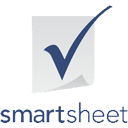
Smartsheet
Teamwork
Teamwork is a project management platform that will support your transformation with a range of interesting features: task management, time and milestone tracking, Gantt charts, powerful instant reports, etc.
Very easy to use and quick to learn, the software provides a variety of predefined templates. However, it is fully capable of managing complex projects, thanks to its robust features (flexible confidentiality parameters, for example).
Finally, by centralising communications, documentation and task coordination, collaboration between teams becomes more productive.
💰Rates
Teamwork is available from €5.99/month/user. There is also a free package.
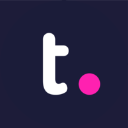
Teamwork
Trello
Trello is undoubtedly one of the best-known project management software packages in the world.
Its interface is divided into three sections: tables, corresponding as it were to the project; vertical lists, to move tasks forward and visualise their progress ("to do", "in progress", "done"); and maps, to represent these tasks.
If it has won over many professionals, it's mainly because of its highly ergonomic interface, which is easy to use and learn. Trello is also very comprehensive, with a wealth of functions (deadlines, comments, attachments, checklists, etc.) and automated workflows.
💰Prices
Trello is available from $5/month/user. There is also a free package.

Trello
VisualProject
VisualProjet is a complete project and schedule management software package designed for SMEs, SMIs and VSEs in all sectors of activity: industry, construction, IT, services, administration, etc. It is deployed on premise, to ensure the security of your data, but remains accessible via the web.
In terms of functionality, the application features a task board system, connected to a powerful Gantt chart, on which you can superimpose the availability and load of your resources in multi-project mode. You can also take advantage of interactive Kanban and Mind Mapping views.
Note that VisualProjet works on a system of lifetime licences, to which you can add an annual support/update access service.
💰Rates
VisualProjet is available from €390 for an individual licence.
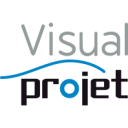
VisualProjet
Wimi
Wimi's promise? To go beyond project management alone, by focusing on improving collaboration and communication between stakeholders, in particular through document management and information sharing.
In this sense, it provides employees with unified workspaces. By bringing together a wide range of functions (creating tags and categories, adding attachments, deadlines, comments, etc.), their aim is to facilitate group activities. It is even possible to invite external parties (partners, customers, etc.) free of charge.
You can also take advantage of real-time reporting to manage your workload effectively.
💰Rates
Wimi is available from €3/month/user.
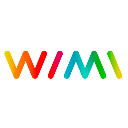
Wimi
Wrike
Wrike is an intuitive and comprehensive project management software package. Many of its users are delighted by its collaborative aspect, appreciating the fluidity of communication between teams and the increase in their productivity.
Wrike's watchword? Saving time. To achieve this, the tool simplifies project prioritisation, automates numerous processes and allows workflows to be customised. No more hours spent on time-consuming administrative tasks!
Easy to use, Wrike features a library of ready-to-use templates: Gantt charts, agile and Kanban boards, interactive calendars, schedules, etc.
💰Prices
Wrike is available from $10/month/user.

Wrike
Zoho Projects
Zoho Projects helps teams of all sizes plan projects, track their progress and then execute them effortlessly. With robust, customisable features, you can organise your work efficiently, manage your resources, control your time and close projects on time. You can also set up Gantt charts.
Zoho Projects also automates routine tasks using a system of customisable criteria (recurring frequency, regular intervals, etc.). So you can avoid wasting time on repetitive, time-consuming actions.
Last but not least, take advantage of a fun, user-friendly interface.
💰Rates
Zoho Projects is available from €5/month/user. A free package is also available.
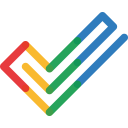
Zoho Projects
Which project management software should you choose? Compare them in brief
| Platform | Type of user | Ease of use | Rates | Strengths |
| Asana | Businesses of all sizes | ⭐⭐⭐⭐☆ | Free version available. Paid offers from €10.99 per user per month. | Intuitive interface and numerous integrations. |
| Basecamp | SMEs, agencies, freelancers | ⭐⭐⭐⭐☆ | One-off package at $99 per month for an unlimited number of users. | Simple, transparent pricing. |
| ClickUp | Companies of all sizes | ⭐⭐⭐⭐☆ | Free version available. Paid offers from $5 per user per month. | Great flexibility and customisation. |
| FoxPlan | Large companies, IT teams | ⭐⭐⭐☆☆ | From €8 per user per month. | Advanced resource and budget management. |
| Freedcamp | SMEs, freelancers | ⭐⭐⭐⭐☆ | Free version available. Paid offers from $1.49 per user per month. | Excellent value for money. |
| Furious | Agencies, consultancies, service companies | ⭐⭐⭐⭐☆ | From €25 per user per month for a module. | Complete management solution with CRM, project management and invoicing. |
| Gladys | SMEs, ETIs, large groups | ⭐⭐⭐⭐☆ | From €9 per user per month. | Collaborative solution with integrated document management and messaging. |
| Jira | Technical teams, developers | ⭐⭐⭐☆☆ | From $7.75 per user per month. | Adapted to agile methods with specific features for software development. |
| JOUROFF Project tracking | Companies of all sizes | ⭐⭐⭐☆☆ | Prices on request. | Time, workload and budget tracking for effective project management. |
| monday.com | Companies of all sizes | ⭐⭐⭐⭐⭐ | Basic package from €9/month/user | Highly customisable interface and powerful automations. |
| Microsoft Project Online | Large companies | ⭐⭐⭐☆☆ | From €9.40 per user per month. | Integration with Microsoft tools and full functionality. |
| Smartsheet | Businesses of all sizes | ⭐⭐⭐⭐☆ | From €6 per user per month. | Intelligent spreadsheets for an overview of projects. |
| Teamwork | SMEs, agencies | ⭐⭐⭐⭐☆ | From €5.99 per user per month. | Complete project management with time tracking and Gantt charts. |
| Trello | Companies of all sizes | ⭐⭐⭐⭐⭐ | Free version available. Paid offers from $5 per user per month. | Easy to use with cards and lists. |
| VisualProject | SMES, SMIS, VSES | ⭐⭐⭐☆☆ | From €390 for an individual licence. | Lifetime licence with full project management functionality. |
| Wimi | Companies of all sizes | ⭐⭐⭐⭐☆ | Price on request. | Improved collaboration and communication with document management. |
| Wrike | Companies of all sizes | ⭐⭐⭐⭐☆ | Paid offers from €9.80 per user per month. | Intuitive interface with advanced collaborative features. |
| Zoho Projects | Businesses of all sizes | ⭐⭐⭐⭐☆ | Free version available. Paid offers from $3 per user per month. | Integration with the Zoho suite and full functionality. |
How do you choose your project management software?
Choosing the right project management software for your business is a crucial decision! The tool you choose will have a direct impact on your operational efficiency and long-term success.
With so many options available on the market, it's important to follow a considered process to find the one that best addresses the specific needs of your organisation.
So how do you go about it? Follow the guide 👉.
Assess your company's needs
Before you start looking for solutions, clearly identify your company's project management needs .
- What type of projects do you manage?
- What features, and especially what functionality, are absolutely necessary?
Also assess the areas that need improvement, such as inter-team communication, time tracking, resource allocation, etc.
Define your selection criteria
Next, create a list of selection criteria based on the needs you have previously identified.
In addition to functional coverage, this may include features such as :
- how easy it is to deploy and use the solution,
- scalability and flexibility
- its integration into your technological ecosystem
- the quality of the support provided
- costs, etc.
💡 We recommend that you formalise all your requirements in a set of specifications.
Put together a shortlist of suitable software
The next step is to explore the project management platform market in order to draw up a shortlist of solutions that match your selection criteria.
To do this, read online comparisons or dedicated articles (like this one 😉 ), view demos or consult the websites of the various suppliers.
Of course, don't forget to take user feedback into account. Also make sure you understand the costs associated with each platform.
Test the different options
To find the perfect software and compare the different options, we strongly recommend that you test them out.
In fact, many publishers offer free trial versions or freemium packages.
Take advantage of this opportunity to put the solution in the hands of future users. They will give you invaluable feedback. You'll be able to measure whether it will be easily adopted by the teams... or not.
Keep your team involved
Throughout the process, it's important to consult the people who will be using the future project management software most.
Their opinion is invaluable, as they will have a perceptive view of the user-friendliness and relevance of the tool to their day-to-day tasks.
At the end of the day, choosing the right project management solution depends on the specifics and objectives of your organisation. But by following these steps, you'll be well on your way to making the best decision and finding the rare pearl that will lead your business to success 🚀.